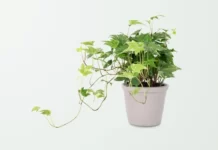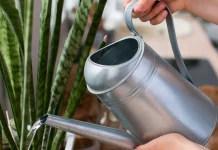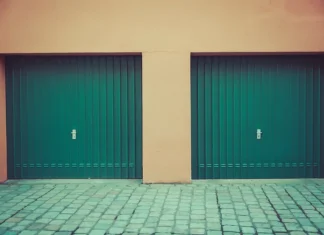Taking care of plants isn’t always as simple as it appears. Take, for example, the issue of withering or drooping leaves. When a plant’s leaves begin to wilt, you might think that giving it a drink is the best course of action. However, this is not the same case so it might come to you why my plant is drooping?
The presence of droopy plants that hang from the stem indicates that the plant is in need of attention. A drooping plant doesn’t always mean it’s dry or browning. While extreme heat and under-watering are common causes of drooping, they are not the only conditions that can induce drooping. Aside from its sad-looking leaves, the drooping plant appears to be in good health.
So, what are the most common as well as basic reasons for droopy plants?
Why is My Plant Drooping? Causes of Drooping
There are some main causes for a plant’s leaves to seem droopy.
1. Underwatering
Most people suspect underwatering when they notice a droopy plant, which is actually a common cause of droopy plants. When you don’t give proper water to plants it starts drooping leaving leaves dull.
2. Overwatering
Overwatering is most likely the cause of your plant’s withered and yellow leaves. Because they are soggy and will appear soft and floppy. Plants droop when they are given more water than they need. Because each plant has a different water need and it is a significant factor to consider, you should not give your plant water as soon as one of its leaves drops over.
3. No Sunlight
Another reason your plant is drooping is not receiving enough sunlight. If your plant doesn’t get enough sun, it will start to wilt and droop since it can’t absorb enough light to sustain itself.
4. Transplant Shock
It takes some time for a plant to adjust to its new environment after it was replanted and it causes the plants to wilt or droop. Be polite during the reporting procedure. The roots should not be bumped or shaken. The plant may fall into shock and wilt as a result of these injuries.
5. Plant Diseases
A plant drooping also indicates that it is suffering from some diseases. It can harm the plant’s root system and decreases its access to water, oxygen, and nutrients. Fungal, bacterial spots, rot roots, mold, mildew, and even a virus are all common plant illnesses. Each disease requires a unique diagnosis and treatment.
6. Temperature Stress
If your plant is drooping but it is not due to water damage, it might be due to the temperature. Most indoor plants are likely to grow in high and humid temperatures ranging from 13 to 32 degrees Celsius.
Plants may also droop when it’s really hot outdoors because of transpiration. When water evaporates from the leaves faster than it takes from its roots, drooping happens. A plant’s leaves may also wilt if its pot is too small for its root system, indicating that it needs to be repotted. This is due to the fact that a plant that has outgrown its container may be unable to absorb nutrients correctly.
Now that we have discussed the possible reasons for drooping plants let’s get into how we can fix our drooping plants. To save your plant, you need to do these methods early on.
How to Fix Drooping Plants
1. Improve the Water Situation
As we discussed, you’ve already watered the plants to no avail so the issue isn’t just dry soil. However, this does not rule out the possibility of a water shortage. Surprisingly, having too much water might result in the same drooping plants as having too little. The roots are suffocated and unable to draw in water correctly when there is too much water or simply heavy soil that does not drain. Even if the pot isn’t completely dry, the plant begins to droop without water inside its tissues. Repotting a plant into fresh soil and even trying a larger container while you’re at it might be quite beneficial. Plants that have become root-bound can droop due to a lack of space in the pot.
2. Check for Bugs
If the water and soil problems do not appear to be the source of the problem, take a closer look at the plants to see if there is any evidence of insects. Any of the different sap-sucking insects could be to blame, even for indoor houseplants. When your plant’s fluids are sucked by too many pests, it loses internal water pressure in the same manner that too-dry soil does.
3. Provide Support
Sometimes, all your plant needs is a little support to stay upright. It’s most likely becoming too heavy for your plant if it begins to droop but the leaves and stems remain solid. A stick or rod firmly placed in the soil can be a simple solution, but you run the danger of piercing the roots. Attaching support outside the pot is another option that may be better for your plants. Use a soft string or gardening ties to carefully elevate the plant and fasten it to the stake.
4. Check for Damage
Examine the stem to check whether it has been damaged if you notice that only one area of the plant is drooping. It also doesn’t have to be snapped over completely to be a concern. When a stem bends, it can still break on the interior, preventing proper water circulation farther up the plant. The presence of drooping in only one region of the plant is a strong indication that the stem is the source of the problem. When there is a clear kink in the stem, straighten it out and use cheesecloth to bind up the damaged area. With luck, the water will continue to circulate within the plant, allowing it to heal. Otherwise, keep everything tidy.
5. Use Some Shade
Though this relates to our prior comments on watering, there is a separate reason for your plant’s lack of water. Even if you’re watering according to the instructions, your plants may wilt if they’re in a hotter or sunnier environment than they’re used to. Excessive heat causes plants to use more water, which might lead to drooping if you can’t keep up. Rather than just watering extra, this is a case when transferring a plant to a less intense location may be the answer. Meanwhile, give it more water to help it grow while it adjusts to its new environment.
With so many possibilities, figuring out why your plants are drooping may require some investigation and patience. Hopefully, a solution will emerge, allowing you to return to your gardening and healthy houseplants.
Final Thoughts
You’ll never ask now why is my plant drooping again because now you have a checklist to go through and to identify what your plant needs. Because plants can’t talk, they communicate their problems to us via their appearance. But now that you know what causes plants to wilt and how to fix it, you’ll be able to treat every drooping leaf that comes your way.












